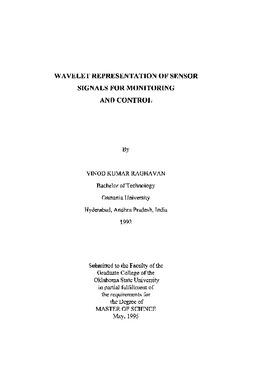| dc.description.abstract | The chemical Process Industries rely heavily on pattern based information utilization. Process trends and patterns contain virtually all the information about the process and provide the operators a basis to determine the process condition. It is based on changes in these ratterns that operators make the necessary adjustments to the process operating conditions, depending on their interpretation. In general, process condition can confidently be judged only by monitoring multiple signals simultaneously and by context dependent pattern recognition. A simple example of a exothermic CSTR can be used to illustrate this. When the rector temperature rises and the coolant flow rate remains constant or decreases, the operator may take it as a premonition of impending doom, but if the coolant flow rate also goes up to accommodate for this increase in reactor temperature, the operator might take no prophylactic measures. It can easily be concluded that good signal processing techniques are necessary to develop the next generation of automated process monitoring techniques. Sensor signals samples are periodically collected by data collecting techniques that usually introduce sensor noise to the already noisy raw signal from the process. This raw signal has to be converted to a useful form before it can actually be used further. The challenge is to provide a signal processing technique that can process a signal on-line and feed it to a process monitoring technique. Howev~r, the catch is that all signal processing cause signal distortion at least to some extent. This cannot be tolerated, especially distortions towards the end ofthe signal, samples that correspond to the most recent juncture in time. This is because it is these samples that trigger off a process monitoring technique into predicting the process as normal or abnormal. Prediction of a normal state as abnormal can probably tolerated but predicting an abnormal state as normal can prove catastrophic. In this work a novel signal processing method using Wavelets is discussed. Wavelet Transforms are similar to the age old Fourier Transforms, but outmatches the Fourier Transforms in many desired attributes. Wavelets not only provide a powerful signal processing/analysis technique, they are also capable of providing significant data compression. In this work data compression's ofthe order of 90% were achieved without significant loss in the information content of the signals. This work to our knowledge is the first to emphasize the importance of signal extension techniques for an applications like pattern recognition. A new signal extension technique (NET) is described and its superiority over other signal extension techniques is demonstrated. | |
